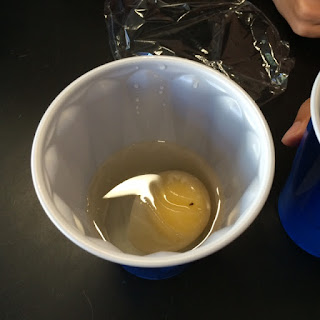Unit 3 Reflection
In this unit, we learned about cells, photosynthesis and cellular respiration. In cells, we learned about the discovery of the cell that led to the cell theory, prokaryotes and eukaryotes, cell boundaries, and the diversity of cellular life. The discovery of the cell began by Robert Hooke using an compound microscope to look at a thin slice of cork and called the chambers in it cells. Later on, Anton Van Leeuwenhoek used a single lens microscope to look at pond water and other living things. He noticed that organisms were everywhere. In 1838, German botanist Matthias Schleiden concluded that all plants are made of cells and in 1839, German biologist Theodore Schwann concluded that all animals are made of cells. In 1855, German physician Rudolf Virchow concluded that new cells could be produced only from existing cells. This led to the cell theory that states, all living things are made of cells, cells are the basic units of structure and function in all living things and new cells come from existing cells.
Prokaryotes and Eukaryotes are two types of cells. Prokaryotes have genetic material that a nucleus contains and are smaller than a eukaryotes. They do not contain a nucleus but they carry out every activity associated with living things. Bacteria are prokaryotes. Eukaryotes are cells that have a nucleus. They are larger than prokaryotes and have their genetic material separated from the rest of the cell. They are very specialized as they contain lots of structures and internal membranes. They can be unicellular or multicellular organisms. The structure of eukaryotes are made of many organelles. It's divided into two major parts, the nucleus and the cytoplasm. The cytoplasm is the portion of cells outside the nucleus and the nucleus is the brain of the cells as it helps make instructions for making proteins and other important molecules. There are two types of eukaryotes, plant and animal cells. Plant cells contain a vacuole, lysosomes, chloroplasts, cell membrane, cell wall, golgi apparatus, mitochondria, rough er, nucleus, nucleolus, ribosomes, smooth er, nucleus, nucleolus, ad nuclear envelope. Ribosomes are small particles of RNA and protein. Endoplasmic Reticulum is the site where lipid components of the cell membrane are assembled and exports proteins and other materials. The difference between smooth er and rough er is rough er has ribosomes on the outside and smooth er doesn't. Golgi apparatus helps modify, sort, and package proteins and other materials from the er for storage or secretion. Lysosomes are small organelles filled with enzymes that help break down lipids, carbohydrates, and proteins into small molecules. They also break down old organelles. Vacuoles are storage sacs that store water, salts, protein and carbohydrates. Mitochondria are organelles that convert chemical energy into energy that cells can use. Chloroplasts are organelles that capture the energy from sunlight to convert it into chemical energy to do photosynthesis. An animal cell contains nucleolus, nucleus, nuclear envelope, rough er, golgi apparatus, ribosomes, cell membrane, mitochondria, smooth er and centrioles. Nuclear envelopes are composed of two membranes and is filled with holes on the outside to let material move in and out of the nucleus. Nucleolus is the inside of the nucleus and the centrioles are organelles that involve in making spindles of fiber in cell division.
In cell boundaries, cell membranes and cell walls let specific molecules to go in and out of the cell by many forms of processes. The processes are diffusion, and osmosis. They're are many forms of diffusion like facilitated diffusion. Facilitated diffusion helps the diffusion of glucose across the membrane. Diffusion is a process when particles tend to move from high concentration to low concentration. Osmosis is the diffusion of water though a selective permeable membrane. They are involved in three types of solutions, isotonic, hypertonic, and hypotonic. Isotonic is neutral as solutes stays in the cell, hypertonic has a higher solute concentration as water goes out of the cell and hypotonic has a lower solute concentration as water goes into the cell. Active transport is involved in diffusion. They move cells in the opposite direction by concentration difference. There are four processes that involve movement in the cell membrane. Endocytosis takes material into the cell by pockets of the cell membrane, phagocytosis eats cells by surrounding particles, pinocytosis takes up liquid, and exocytosis release material from the cell. The diversity of cell life is by the levels of organization of cells, tissues, organs, and organ systems.
Photosynthesis and cellular respiration are processes that require glucose. Photosynthesis is made by producing glucose and oxygen using CO2 and sunlight. Cellular respiration helps break down glucose into energy. Photosynthesis occurs in chloroplasts and thylakoids and cellular respiration occurs in mitochondria and mitochondrion. They are both made by cycles.
This unit was a unit that was very interesting to me. I learned a lot in this unit and did many labs to relate to this unit. So far, this is one of my favorite units because of the topics and I learned a lot from it.






